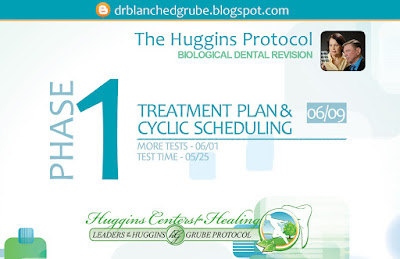Phase Two of the Huggins-Grube Protocol – Part Two Intravenous Vitamin C (“High-Powered C”)
Last week’s post began our discussion of the second phase of the Huggins-Grube Protocol. You’ll remember we talked about the practice of conscious sedation, humming along with Annie Lennox singing in the background. If you’re like me, you’re still humming!
Intravenous Vitamin C
Anyway, it’s time now to cover the topic of protection against mercury and other toxins. One of the most important features of our Protocol is the use of intravenous Vitamin C.
Cellular Metabolism
Everyone knows that Vitamin C is good for you, right? I mean, it increases the general efficiency of cellular metabolism – that is, the nitty-gritty work that each one of our billions of cells performs to keep us alive.
Remember high school biology? Well, just in case: each cell has a membrane that surrounds and protects it. By means of this cell membrane, nutrients are pulled into the cell, and toxins are pushed out. Vitamin C keeps this process running smoothly.
An Efficient Detoxifier
Even more to the point of our Protocol, Vitamin C is easily one of the most efficient aids in helping the body detoxify from the effects of dead and root canal teeth, as well as the waste accumulated around them.
Molecular Bouncers
Upon detecting the presence of a heavy metal – lead, cadmium, or mercury – within a cell, Vitamin C immediately issues a “red-alert” message to the cell, prompting it to begin production of glutathione. Glutathione is a special detoxifying chemical that binds itself to mercury and escorts it out of the body. If your cells are so many “clubs,” then glutathione molecules are their bouncers: “Out the door, buddy!”
Oral Vitamin C: A Big “No-No” During Revision
As great as intravenous Vitamin C therapy is during the dental revision process, a word of caution is needed here. Under no circumstances should a patient ingest oral Vitamin C in any form on the day of surgery. Why? Because in this form, it counteracts the effects of anesthetics, and big-time.
Practically, this means that all local anesthetic will wear-off within 5 to 10 minutes. After that, you might as well be in thumb screws.
Mysteriously, the 25 to 50 grams of intravenous Vitamin C delivered directly to your blood stream doesn’t interfere at all in this way. So rest easy. Just skip your Vitamin C supplements on surgery day!
More Protection
In the next couple of posts, we’ll look at the other important tools we use to protect our patients – and ourselves – during the work of dental revision. Yes, heavy metals are toxic to humans, and dental personnel are people too!
Until then, take good care, and make sure you’re getting your Vitamin C every day! Your cells will thank for it.
All the best,
Dr. Blanche






